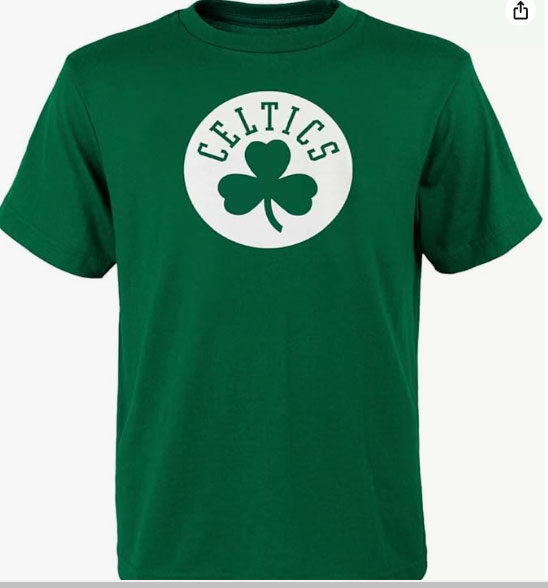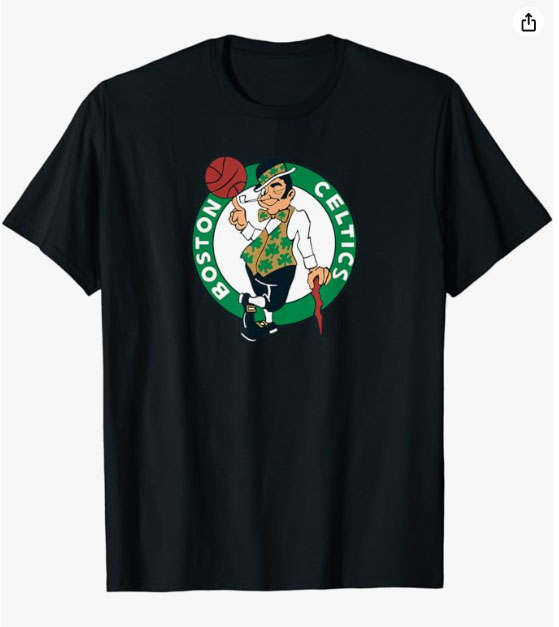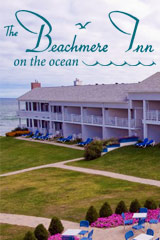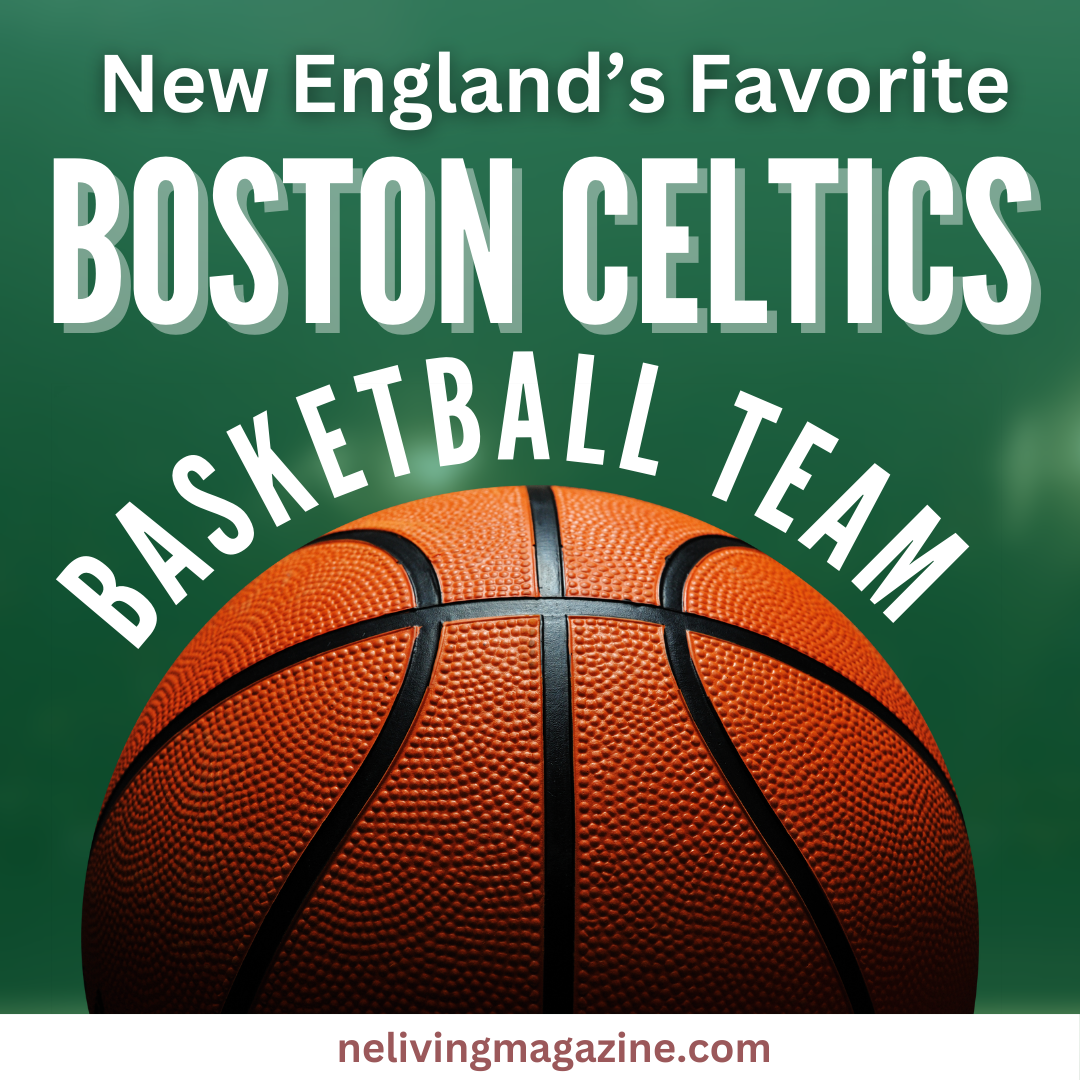
The History of The Boston Celtics: New England’s Favorite NBA Team
A New England Sports Tradition: Following Boston Celtics Basketball
Congratulations to the 2024 Boston Celtics on winning the team’s 18th NBA Championship. As New Englanders and Celtics fans worldwide celebrate. Let’s reflect on the team’s past accomplishments. The Boston Celtics, a team with a legacy as rich as the sport of basketball itself, have become synonymous with success, tradition, and an unwavering fan base in New England and beyond. Since their inception in 1946, the Celtics (also known as “The C’s”) have embodied the spirit of competition and excellence, carving out a history that spans over seven decades. Let’s take a moment to remember the Boston Celtics’ former stars, storied coaches, broadcasters, and other notable figures who have contributed to the illustrious history of the Boston Celtics.
MAP OF THE BOSTON GARDEN – NORTH STATION, BOSTON, MA
History of the Boston Celtics
The Boston Celtics were founded on June 6, 1946, by Walter A. Brown, who was also the president of the Boston Garden-Arena Corporation. Brown’s vision was to create a basketball team that would rival the successful hockey teams of the time, and his ambition quickly paid off. The Celtics joined the Basketball Association of America (BAA), which would later merge with the National Basketball League (NBL) to form the National Basketball Association (NBA) in 1949.
Early Years and Building an NBA Dynasty (1946-1956)
In their early years, the Celtics struggled to find their footing, often finishing in the lower half of the standings. However, the team’s fortunes began to change with the arrival of Red Auerbach as head coach in 1950. Auerbach’s no-nonsense coaching style and keen eye for talent set the stage for what would become one of the most successful franchises in sports history.
A pivotal moment came in 1956 when the Celtics drafted Bill Russell, a dominant center from the University of San Francisco. Russell’s impact was immediate, transforming the Celtics into a defensive powerhouse. Alongside Russell, the Celtics also acquired Tommy Heinsohn and K.C. Jones, two players who would become integral parts of the team’s success.
The Dynasty Years (1957-1969)
The late 1950s and 1960s were a golden era for the Celtics. With Bill Russell anchoring the defense and Auerbach’s strategic brilliance, the Celtics won their first NBA Championship in 1957, defeating the St. Louis Hawks in a thrilling seven-game series. This victory was just the beginning. Over the next 13 seasons, the Celtics would win 11 NBA titles, including an unprecedented eight consecutive championships from 1959 to 1966.
Key players during this period included John Havlicek, Sam Jones, and Bob Cousy, each of whom played crucial roles in the team’s dominance. The Celtics’ success was characterized by a commitment to teamwork, a stifling defense, and an unselfish offensive philosophy. Bill Russell, in particular, became the face of the franchise, earning 11 championship rings and five MVP awards during his career.
Team Transition and Resurgence (1970-1986)
The retirement of Bill Russell in 1969 marked the end of an era, and the Celtics faced a period of transition. Despite this, the team managed to stay competitive, winning two more championships in 1974 and 1976 under the leadership of Dave Cowens and coach Tom Heinsohn.
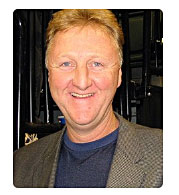 The arrival of Larry Bird in 1979 heralded a new chapter for the Celtics.
The arrival of Larry Bird in 1979 heralded a new chapter for the Celtics.
Larry Bird, a forward from Indiana State University, quickly established himself as one of the greatest players in NBA history. His rivalry with Magic Johnson of the Los Angeles Lakers became the stuff of legend, revitalizing the NBA and drawing millions of new fans to the sport.
With Bird, Robert Parish, and Kevin McHale forming the “Big Three,” the Celtics won three NBA championships in the 1980s (1981, 1984, and 1986). This era was marked by intense battles with the Lakers, with the Celtics and Lakers meeting in the NBA Finals three times during the decade.
The Lean Years and Rebuilding (1987-2007)
Following the glory years of the 1980s, the Celtics faced a challenging period marked by injuries and the tragic deaths of promising young players Len Bias and Reggie Lewis. Despite these setbacks, the team remained competitive but struggled to achieve the same level of success as in previous decades.
In the early 2000s, the Celtics began to rebuild, drafting Paul Pierce in 1998 and acquiring other key players like Antoine Walker. While these efforts led to some playoff appearances, the team still fell short of championship contention.
The Big Three Era and Return to Celtics Glory (2008-2013)
The Celtics’ fortunes changed dramatically in the summer of 2007 when General Manager Danny Ainge orchestrated trades to acquire Kevin Garnett and Ray Allen, joining Paul Pierce to form a new “Big Three.” Under the leadership of head coach Doc Rivers, the revamped Celtics quickly became one of the most formidable teams in the league.
In the 2007-2008 season, the Celtics finished with the best record in the NBA and went on to win their 17th championship, defeating the Los Angeles Lakers in the NBA Finals. This victory was particularly sweet, as it marked the Celtics’ return to the top of the NBA after a 22-year drought.
The Celtics remained contenders for the next few seasons, making another Finals appearance in 2010, but ultimately fell to the Lakers in a hard-fought seven-game series. The team’s championship window began to close as injuries and age took their toll on the core players.
Recent Years and Future Prospects (2014-Present)
In the years following the breakup of the Big Three, the Celtics entered another rebuilding phase. Under the guidance of head coach Brad Stevens, who was hired in 2013, the team focused on developing young talent and accumulating draft assets. This strategy paid off, as the Celtics quickly returned to playoff contention, reaching the Eastern Conference Finals in 2017, 2018, and 2020.
The emergence of young stars like Jayson Tatum and Jaylen Brown has given Celtics fans renewed hope for the future. With a rich history of success and a promising young core, the Boston Celtics are well-positioned to continue their legacy as one of the premier franchises in the NBA.
Storied Players and Hall of Fame Members
The Boston Celtics have been home to some of the greatest players in basketball history, many of whom are enshrined in the Naismith Memorial Basketball Hall of Fame in Springfield, MA. Here are some of the most iconic Celtics players who have left an indelible mark on the franchise.
Bill Russell
No discussion of the Celtics’ storied history would be complete without mentioning Bill Russell. Widely regarded as the greatest defensive player in NBA history, Russell’s impact on the game cannot be overstated. During his 13-year career, Russell led the Celtics to 11 NBA championships, a record that still stands today. His ability to block shots, grab rebounds, and anchor the defense revolutionized the center position and set the standard for basketball players for generations to come.
Larry Bird
Larry Bird, known as “Larry Legend,” is one of the most beloved figures in Celtics history. A three-time NBA champion and three-time MVP, Bird’s combination of shooting, passing, and basketball IQ made him one of the most versatile players of all time. His rivalry with Magic Johnson and the Los Angeles Lakers during the 1980s is credited with helping to popularize the NBA and elevate the league to new heights.
John Havlicek
John Havlicek, or “Hondo,” is the Celtics’ all-time leading scorer and a key figure in the team’s success during the 1960s and 1970s. Known for his tireless work ethic and clutch performances, Havlicek was an eight-time NBA champion and a 13-time All-Star. His iconic steal in Game 7 of the 1965 Eastern Conference Finals, famously called by radio announcer Johnny Most with the words “Havlicek stole the ball!” remains one of the most memorable moments in NBA history.
Paul Pierce
Paul Pierce, also known as “The Truth,” spent 15 seasons with the Celtics and was instrumental in the team’s 2008 championship run. A ten-time All-Star, Pierce ranks among the franchise’s all-time leaders in points, rebounds, and assists. Known for his scoring ability and clutch performances, Pierce’s legacy is cemented as one of the greatest players in Celtics history.
Bob Cousy
Bob Cousy, known as “The Houdini of the Hardwood,” was a pioneer of the modern point guard position. His exceptional ball-handling and playmaking skills helped revolutionize the game and led the Celtics to six NBA championships during the 1950s and 1960s. Cousy was a 13-time All-Star and an MVP in 1957, earning a place among the NBA’s all-time greats.
Kevin McHale
Kevin McHale, a key member of the Celtics’ “Big Three” during the 1980s, was known for his exceptional low-post scoring and defense. A seven-time All-Star and three-time NBA champion, McHale’s footwork and scoring prowess made him one of the most difficult players to guard in NBA history. His contributions to the Celtics’ success earned him a spot in the Hall of Fame and recognition as one of the greatest NBA power forwards of all time.
Other NBA Hall of Famers
In addition to these iconic players, the Celtics boast a long list of Hall of Famers who have contributed to the franchise’s success, including:
- Sam Jones: A ten-time NBA champion known for his clutch shooting and scoring ability.
- Bill Sharman: A four-time NBA champion and one of the best free-throw shooters in NBA history.
- Tom Heinsohn: A key player during the Celtics’ dynasty years and a successful coach, leading the team to two more championships in the 1970s.
- Dave Cowens: A two-time NBA champion and MVP who played with relentless energy and toughness.
- Jo Jo White: A two-time NBA champion and Finals MVP known for his scoring and playmaking skills.
Popular Players in the Modern Era
While the Celtics’ history is filled with legends from the past, the modern era has also seen its share of popular and impactful players. These athletes have continued the Celtics’ tradition of excellence and have become fan favorites in their own right.
Isaiah Thomas
Isaiah Thomas, a diminutive point guard with a huge heart, quickly became a fan favorite during his time with the Celtics from 2015 to 2017. Despite his small stature, Thomas was a prolific scorer and led the team to multiple playoff appearances. His heroic performance in the 2017 playoffs, despite personal tragedy, endeared him to Celtics fans and solidified his place in the team’s recent history.
Al Horford
Al Horford, a versatile big man, played a crucial role in the Celtics’ success during his tenure with the team. Known for his leadership, defense, and ability to stretch the floor, Horford was a key part of the Celtics’ playoff runs in the late 2010s. His professionalism and impact on and off the court made him a beloved figure among fans.
Jayson Tatum and Jaylen Brown
Jayson Tatum and Jaylen Brown represent the future of the Celtics and have already made significant impacts early in their careers. Both players were high draft picks and have quickly developed into All-Star talents. Tatum, known for his scoring ability and smooth offensive game, and Brown, recognized for his athleticism and defensive prowess, have formed a dynamic duo that gives Celtics fans hope for continued success in the years to come.
Coaches
The Celtics’ success over the years can be attributed not only to their talented players but also to the exceptional coaches who have led the team. Here are some of the most notable coaches in Celtics history.
Red Auerbach
Red Auerbach is synonymous with Celtics basketball. Serving as head coach from 1950 to 1966, Auerbach led the team to nine NBA championships, including eight consecutive titles from 1959 to 1966. Known for his innovative strategies and fiery personality, Auerbach’s influence extended beyond coaching as he later served as the team’s general manager and president, continuing to shape the franchise’s success for decades.
Tom Heinsohn
Tom Heinsohn, a former Celtics player, took over as head coach in 1969 and led the team to two NBA championships in 1974 and 1976. Heinsohn’s coaching style emphasized a fast-paced, high-scoring offense, and his ability to connect with players helped the team navigate a transitional period following the retirement of Bill Russell.
K.C. Jones
K.C. Jones, another former Celtics player, served as head coach from 1983 to 1988. During his tenure, Jones led the team to two NBA championships in 1984 and 1986. Known for his calm demeanor and emphasis on defense, Jones was able to get the best out of a talented roster that included Larry Bird, Kevin McHale, and Robert Parish.
Doc Rivers
Doc Rivers was the architect behind the Celtics’ resurgence in the late 2000s. Hired as head coach in 2004, Rivers guided the team to the 2008 NBA championship, the franchise’s first title in 22 years. Rivers’ ability to manage egos and foster a strong team culture was instrumental in the Celtics’ success during this period.
Brad Stevens
Brad Stevens, known for his strategic acumen and player development skills, took over as head coach in 2013. Stevens quickly gained a reputation as one of the brightest young coaches in the NBA, leading the Celtics to multiple playoff appearances and helping develop the team’s young talent. In 2021, Stevens transitioned to a front-office role, becoming the Celtics’ president of basketball operations.
Broadcasters
The Celtics’ rich history has been brought to life by a number of iconic broadcasters who have narrated the team’s greatest moments. These voices have become an integral part of the Celtics’ lore, providing fans with unforgettable calls and insights.
Johnny Most
Johnny Most, the legendary radio voice of the Celtics, is perhaps the most iconic broadcaster in the team’s history. Known for his passionate and enthusiastic commentary, Most called Celtics games from 1953 to 1990. His memorable calls, such as “Havlicek stole the ball!” and his vivid descriptions of the action, made him a beloved figure among Celtics fans.
Mike Gorman
Mike Gorman has been the television voice of the Celtics since 1981, making him one of the longest-tenured broadcasters in NBA history. Gorman’s smooth delivery and deep knowledge of the game have made him a fan favorite. His long-time partnership with color commentator Tommy Heinsohn created one of the most beloved broadcasting duos in sports.
Tommy Heinsohn
Tommy Heinsohn, a Celtics legend as both a player and coach, became a beloved broadcaster for the team, serving as a color commentator alongside Mike Gorman for over 30 years. Heinsohn’s passionate and often biased commentary endeared him to Celtics fans, who appreciated his deep love for the team and his willingness to speak his mind.
Sean Grande
Sean Grande has served as the radio play-by-play announcer for the Celtics since 2001. Known for his energetic and insightful commentary, Grande has become a familiar voice to Celtics fans tuning in on the radio. His ability to capture the excitement of the game has made him a respected figure in the broadcasting community.
The Boston Garden and TD Garden
The Boston Celtics’ legacy is not only defined by their on-court achievements but also by the iconic venues they have called home. The Boston Garden and its successor, TD Garden, have been the stages where countless unforgettable moments have unfolded.
The Boston Garden (1928-1995)
The original Boston Garden, opened in 1928, was one of the most storied arenas in sports history. Known for its intimate and often raucous atmosphere, the Garden was the home of the Celtics from their inception in 1946 until 1995. The parquet floor, with its distinctive design, became a symbol of Celtics basketball, and the arena itself was the site of numerous legendary performances and championship celebrations.
The Garden’s unique layout, with its obstructed-view seats and proximity to the action, made it a challenging venue for visiting teams and a fortress for the Celtics. The deafening roar of the crowd, the smell of popcorn, and the sense of history that permeated the building created an environment that was both intimidating and inspiring.
Places to Stay near TD Garden Boston
For Celtics fans traveling to Boston, there are plenty of excellent accommodations near TD Garden and throughout the city. Whether you’re visiting to catch a game, explore the city’s rich basketball history, or experience Boston’s vibrant nightlife, there are a variety of lodging options to suit every preference and budget. View current TD Garden area hotels and VRBO vacation rentals below.
Luxury Hotels
For those looking for a high-end experience, Boston offers several luxury hotels within walking distance of TD Garden.
- The Langham, Boston – A refined and elegant hotel located in the Financial District, offering top-notch service and world-class amenities.
- The Ritz-Carlton, Boston – Located near Boston Common, this luxury hotel provides a blend of classic elegance and modern comfort.
- Fairmont Copley Plaza – A historic Boston landmark with luxurious accommodations and a prime location in Copley Square.
Mid-Range Hotels
For visitors looking for comfort and convenience at a reasonable price, these hotels offer a great balance of value and quality.
- Hotel Indigo Boston Garden – Just steps away from TD Garden, this stylish boutique hotel is a favorite among basketball fans.
- The Boxer Boston – A trendy and modern hotel in a historic building, offering a great location and excellent service.
- Hyatt Regency Boston – Centrally located near Downtown Crossing, this hotel offers spacious rooms and great amenities.
Budget-Friendly Options
For travelers looking to experience Boston on a budget, there are affordable options that still provide comfort and convenience.
- Holiday Inn Express Boston Garden – Located right near the arena, this hotel is a great choice for Celtics fans who want to be close to the action.
- enVision Hotel Boston-Everett – A short drive from the city, this budget-friendly boutique hotel offers modern accommodations at a great price.
Historic & Boutique Hotels
For visitors who want to immerse themselves in Boston’s rich history, these boutique hotels offer charm and character along with comfortable accommodations.
- The Liberty Hotel – Once a historic jail, this unique hotel blends history with luxury and offers fantastic dining options.
- XV Beacon – A stylish and intimate boutique hotel located in Beacon Hill, perfect for a luxurious stay with a personal touch.
- The Eliot Hotel – A classic Boston hotel with old-world charm and a prime location near Newbury Street’s shopping and dining.
Extended Stay & Vacation Rentals
For those planning a longer visit or traveling with a group, extended-stay hotels and vacation rentals provide additional space and amenities.
- Residence Inn by Marriott Boston Downtown/Seaport – A great option for extended stays with spacious suites and kitchenettes.
- Airbnb & VRBO Rentals – Boston offers a variety of vacation rental options, from charming brownstones in Back Bay to modern condos with waterfront views.
No matter where you choose to stay, Boston offers a wide range of accommodations to make your visit enjoyable, whether you’re in town for a Celtics game or exploring the city’s many attractions.
TD Garden (1995-Present)
In 1995, the Celtics moved to the new TD Garden, a state-of-the-art arena located just a few hundred feet from the original Boston Garden site. TD Garden, also home to the NHL’s Boston Bruins, offers modern amenities and increased seating capacity while preserving the passionate atmosphere that made the original Garden special.
TD Garden has witnessed the resurgence of the Celtics in the 21st century, including the team’s 2008 championship run. The arena’s updated facilities provide an enhanced fan experience, with improved sightlines, advanced technology, and a vibrant game-day atmosphere.
The parquet floor tradition continues at TD Garden, maintaining a tangible link to the Celtics’ storied past. The Garden has become a premier destination for basketball fans, hosting not only Celtics games but also concerts, events, and other major sporting events.
The Boston Celtics’ legacy is a tapestry woven with the threads of triumph, tradition, and an unwavering commitment to excellence. From the early days of Red Auerbach and Bill Russell to the modern era of Jayson Tatum and Jaylen Brown, the Celtics have consistently been at the forefront of the NBA. Their storied history is filled with legendary players, iconic coaches, and unforgettable moments for sports fans in New England and across the globe.
As the Celtics continue to build on their rich history, fans can look forward to an exciting future for New England’s most popular NBA team. The Celtics are fortunate to have a combination of a passionate fan base, a commitment to winning, and a dedication to upholding the values that have defined the franchise for decades. We trust that the Boston Celtics will remain a cornerstone of the NBA for generations to come.
POPULAR BOSTON CELTICS GIFTS
SHOP BOSTON CELTICS GIFTS
BASKETBALLS ON SALE
Attractions | Inns | Resorts | Hotels
Vacation Rentals |
Real Estate | Restaurants
Camping | Business | Pet Friendly Lodging

